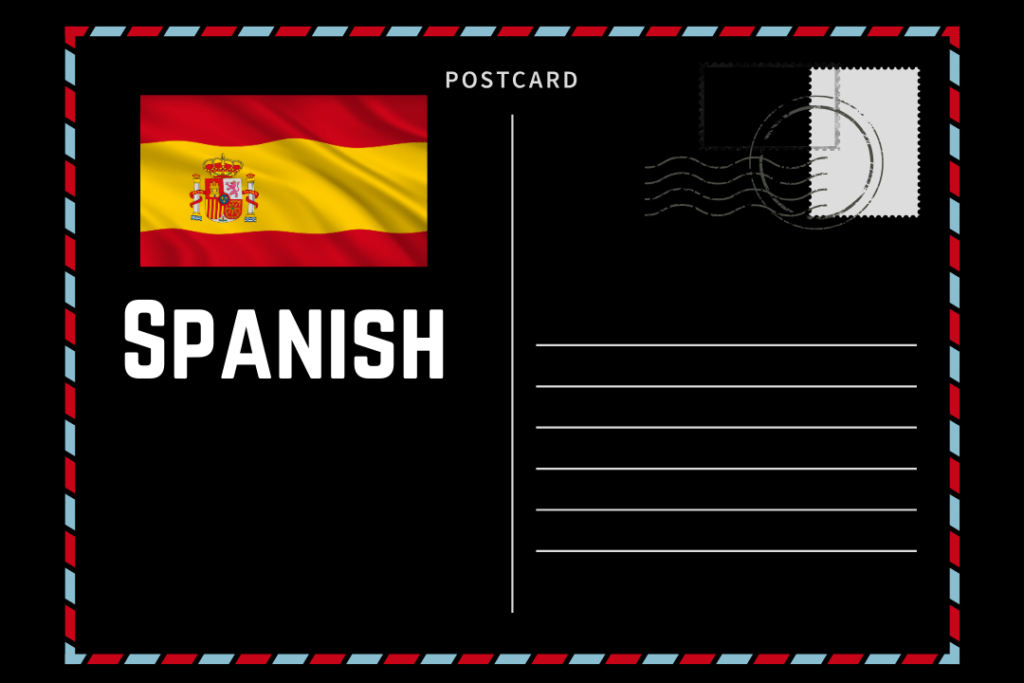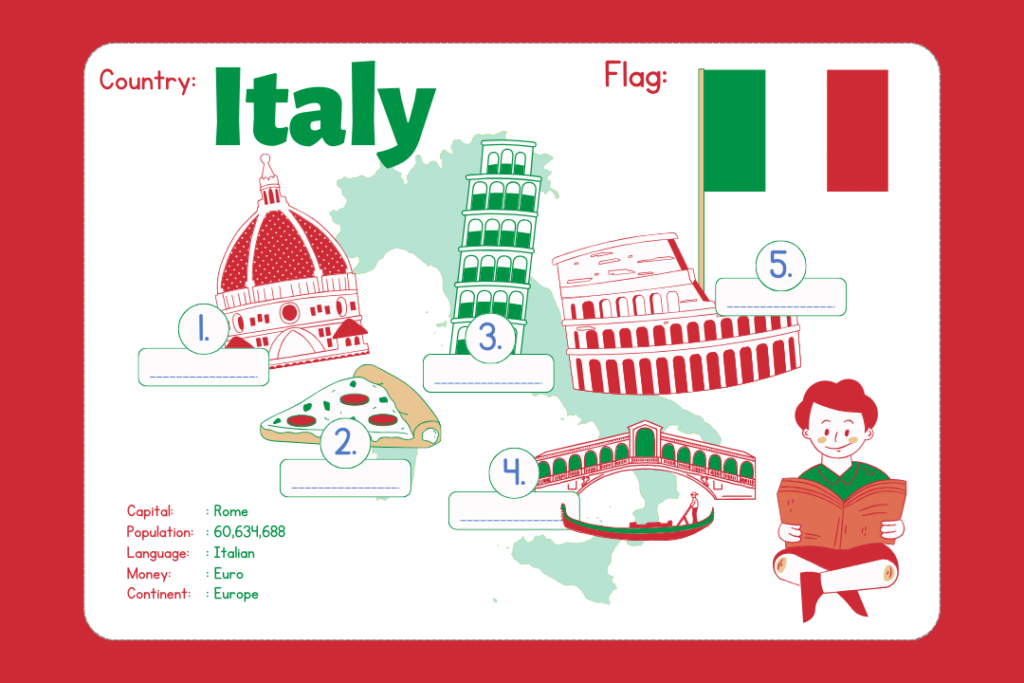What is the Easiest Language to Learn?
Embarking on a language-learning journey can be an enriching experience, and choosing an accessible language like Esperanto, Norwegian, or Swedish can make the process more enjoyable and less daunting. The sense of accomplishment in mastering these languages, known for their ease of learning, can significantly boost your confidence and serve as a strong motivator to continue your language learning journey.
Read More Articles:
Montessori Education vs. Traditional Education:
International Journal of Qualitative Studies in Education: A Valuable Resource for Researchers
The most beginner-friendly languages:
1. Esperanto
- Origin: Created by L.L. Zamenhof in 1887
- Classification: Constructed language
- Number of speakers: Approximately 2 million worldwide
- Difficulty for native English speakers: Very easy

Reasons for being easy to learn:
- Regular grammar: Esperanto has very regular and logical grammar, with few exceptions or irregular forms. For example, verbs are always conjugated in the same way, regardless of the subject or tense, which makes it easier to learn and use them in sentences. Phonetic spelling: The spelling system is entirely phonetic, meaning that each sound is represented by a single letter.
- Limited vocabulary: Esperanto’s basic vocabulary consists of only about 1,500 words, which can be expanded by adding prefixes and suffixes. For example, the word ‘demo’ means ‘house, ‘but by adding the suffix ‘-et-,’ it becomes ‘dome to, ‘which means ‘tiny house. ‘No genders: Esperanto does not have grammatical gender, which simplifies the learning process.
Other advantages:
- International language: Esperanto is designed to be an international auxiliary language, and it is spoken by people from all over the world.
One of the great things about language learning is the community that comes with it. Esperanto, in particular, has a large and active community with many resources and opportunities for language learners. This community is not just supportive but also welcoming, making it a great place to start your language-learning journey. The sense of belonging and encouragement from this community can make your language-learning experience even more enjoyable and rewarding.
2. Norwegian
Norwegian is considered one of the easiest Germanic languages for native English speakers to learn. Its grammar and pronunciation could be more complex.
- Origin: Scandinavia
- Classification: Germanic language (North Germanic branch)
- Number of speakers: Approximately 5.3 million worldwide
- Difficulty for native English speakers: Easy

Reasons for being easy to learn for native English speakers:
Similar grammar: Norwegian grammar is relatively similar to English grammar, with subject-verb-object word order and similar verb tenses.
Familiar words: Many Norwegian words are similar to English words due to their shared Germanic roots.
Phonetic spelling: Norwegian spelling is primarily phonetic, meaning that words are generally pronounced as they are spelt.
No grammatical gender: Norwegian does not have grammatical gender, which simplifies the learning process.
Other advantages:
Closely related to other Scandinavian languages: Once you learn Norwegian, it will be easier to learn other Scandinavian languages, such as Swedish and Danish.
Widely spoken in Scandinavia: Norwegian is the official language of Norway and is also spoken in parts of Sweden, Denmark, and Finland.
Beautiful and expressive language: Norwegian is a beautiful and expressive language with a rich literary tradition.
Overall, Norwegian and Swedish are considered to be relatively easy languages for native English speakers to learn. Their similar grammar, familiar vocabulary, phonetic spelling, and lack of grammatical gender make them accessible choices for beginners. But it’s not just about the ease of learning. The practical benefits of learning these languages, such as their close relationship to other Scandinavian languages and their widespread use in Scandinavia, make them valuable languages to acquire. This emphasis on the practical benefits can make the audience feel that their language learning efforts are not only enjoyable but also beneficial in real-life situations.
3. Swedish
Swedish shares many similarities with Norwegian and is also known for its straightforward grammar and pronunciation.
- Origin: Scandinavia
- Classification: Germanic language (North Germanic branch)
- Number of speakers: Approximately 10 million worldwide
- Difficulty for native English speakers: Easy
Reasons for being easy to learn for native English speakers:
- Similar grammar: Swedish grammar is very similar to English grammar, with subject-verb-object word order and similar verb tenses.
- Familiar words: Many Swedish words are similar to English words due to their shared Germanic roots.
- Phonetic spelling: Swedish spelling is primarily phonetic, meaning that words are generally pronounced as they are spelt.
- No grammatical gender: Swedish does not have grammatical gender, which simplifies the learning process.
Other advantages:
- Swedish is closely related to other Scandinavian languages: Once you learn Swedish, it will be easier to learn other Scandinavian languages, such as Norwegian and Danish.
- Swedish is the official language of Sweden and is also spoken in parts of Finland and Norway. It is widely spoken in Scandinavia.
- Beautiful and expressive language: Swedish is a beautiful and expressive language with a rich literary tradition.
Overall, Norwegian and Swedish are considered to be relatively easy languages for native English speakers to learn. Their similar grammar, familiar vocabulary, phonetic spelling, and lack of grammatical gender make them accessible choices for beginners. But it’s not just about the ease of learning. The practical benefits of learning these languages, such as their close relationship to other Scandinavian languages and their widespread use in Scandinavia, make them valuable languages to acquire. This emphasis on the practical benefits can make the audience feel that their language learning efforts are not only enjoyable but also beneficial in real-life situations.
4. Spanish
Spanish is widely spoken worldwide, making it a practical choice. Its grammar is relatively straightforward, and the pronunciation is generally easy to master.
- Origin: Iberian Peninsula
- Classification: Romance language (Italic branch)
- Number of speakers: Approximately 534 million worldwide
- Difficulty for native English speakers: Easy to Moderate

Reasons for being easy to learn for native English speakers:
- Familiar vocabulary: Many Spanish words are similar to English words due to their shared Latin roots.
- Phonetic spelling: Spanish spelling is primarily phonetic, meaning that words are generally pronounced as they are spelt.
- Regular grammar: Spanish grammar is relatively regular, with few exceptions or irregular forms.
Other advantages:
- Widely spoken around the world: Spanish is the official language of 20 countries and is spoken by a large population in the United States.
- Rich cultural heritage: Spanish is the language of a rich and diverse cultural heritage, including literature, art, and music.
- Practical for travel and business: Learning Spanish can be beneficial for travel and business in many parts of the world.
Overall, Spanish is considered to be a relatively easy language for native English speakers to learn. Its familiar vocabulary, phonetic spelling, and regular grammar make it an accessible choice for beginners. Additionally, the practical benefits of learning Spanish, such as its widespread use around the world and its rich cultural heritage, make it a valuable language to acquire.
Note: While Spanish is generally considered to be an easy language to learn, it can still present some challenges for native English speakers, such as the use of different verb tenses and the gendered nature of nouns. However, with consistent practice and immersion, these challenges can be overcome.
5. French
French is another popular choice for beginners. While its pronunciation can be a bit tricky, its grammar is logical and consistent.
- Origin: France
- Classification: Romance language (Italic branch)
- Number of speakers: Approximately 274 million worldwide
- Difficulty for native English speakers: Moderate
Reasons for being moderately challenging to learn for native English speakers:
Pronunciation: French pronunciation can be challenging for native English speakers, as it involves sounds that are not found in English, such as the nasal vowels and the “r” sound.
Grammar: French grammar is more complex than English grammar, with a greater use of verb tenses and moods and different rules for agreement between nouns and adjectives.
Vocabulary: While there is some overlap in vocabulary between French and English, many words are different or have different meanings.
Other advantages:
Cultural significance: French is the language of a rich and influential culture with a long history of literature, art, and philosophy.
Practical for travel and business: French is the official language of many countries and is widely spoken in Europe and Africa.
Beautiful and expressive language: French is known for its beauty and expressiveness and is often used in poetry, literature, and music.
Overall, French is considered to be a moderately complex language for native English speakers to learn. While its pronunciation and grammar can be challenging, its rich cultural significance, practical benefits, and beauty make it a worthwhile language to acquire. With consistent practice and immersion, native English speakers can overcome the challenges of learning French and achieve fluency.
6. Italian

Italian is a Romance language with a melodic pronunciation. Its grammar is similar to Spanish, making it accessible for speakers of other Romance languages.
- Origin: Italy
- Classification: Romance language (Italic branch)
- Number of speakers: Approximately 65 million worldwide
- Difficulty for native English speakers: Easy to Moderate
Reasons for being easy to learn for native English speakers:
- Familiar vocabulary: Many Italian words are similar to English words due to their shared Latin roots.
- Phonetic spelling: Italian spelling is primarily phonetic, meaning that words are generally pronounced as they are spelt.
- Regular grammar: Italian grammar is relatively regular, with few exceptions or irregular forms.
Other advantages:
- Beautiful and expressive language: Italian is known for its beauty and expressiveness and is often used in opera, music, and poetry.
- Rich cultural heritage: Italian is the language of a rich and diverse cultural heritage, including art, literature, and architecture.
- Practical for travel and business: Italian is the official language of Italy and is also spoken in Switzerland, San Marino, and Vatican City.
Overall, Italian is considered to be a relatively easy to moderate language for native English speakers to learn. Its familiar vocabulary, phonetic spelling, and regular grammar make it an accessible choice for beginners. Additionally, the practical benefits of learning Italian, such as its use in travel and business and its rich cultural heritage, make it a valuable language to acquire.
Note: While Italian is generally considered to be an easy language to learn, it can still present some challenges for native English speakers, such as the use of different verb tenses and the gendered nature of nouns. However, with consistent practice and immersion, these challenges can be overcome.
7. Portuguese
Portuguese, especially Brazilian Portuguese, is known for its clear pronunciation and relatively easy grammar.
- Origin: Iberian Peninsula
- Classification: Romance language (Italic branch)
- Number of speakers: Approximately 258 million worldwide
- Difficulty for native English speakers: Easy to Moderate
Reasons for being easy to learn for native English speakers:
-
- Familiar vocabulary: Many Portuguese words are similar to English words due to their shared Latin roots.
- Phonetic spelling: Portuguese spelling is primarily phonetic, meaning that words are generally pronounced as they are spelt.
- Regular grammar: Portuguese grammar is relatively regular, with few exceptions or irregular forms.
Other advantages:
Portuguese is widely spoken worldwide and is the official language of Portugal, Brazil, and several other countries and territories.
-
- Rich cultural heritage: Portuguese is the language of a rich and diverse cultural heritage, including literature, music, and art.
- Practical for travel and business: Learning Portuguese can be beneficial for travel and business in many parts of the world, especially in Brazil and Portugal.
Overall, Portuguese is considered to be a relatively easy to moderate language for native English speakers to learn. Its familiar vocabulary, phonetic spelling, and regular grammar make it an accessible choice for beginners. Additionally, the practical benefits of learning Portuguese, such as its widespread use around the world and its rich cultural heritage, make it a valuable language to acquire.
- Note: While Portuguese is generally considered to be an easy language to learn, it can still present some challenges for native English speakers, such as the use of different verb tenses and the gendered nature of nouns. However, with consistent practice and immersion, these challenges can be overcome.
8. Indonesian

Indonesian has a simple grammar and a phonetic spelling system. A large number of people worldwide also speak it.
- Origin: Indonesia
- Classification: Austronesian language (Malayo-Polynesian branch)
- Number of speakers: Approximately 270 million worldwide
- Difficulty for native English speakers: Easy
Indonesian is considered an easy language for native English speakers to learn due to several reasons:
- Simple grammar: Indonesian grammar is relatively straightforward, with minimal verb conjugations and grammatical gender.
- Phonetic writing system: Indonesians use a phonetic writing system, where words are pronounced as they are spelt, making it easier to learn and read.
- Common vocabulary: Indonesians borrow words from various languages, including English, Dutch, Arabic, and Sanskrit, which can make the vocabulary more familiar to English speakers.
Other advantages of learning Indonesian include:
- Widespread use: Indonesian is the official language of Indonesia and is spoken by a large population across the country.
- Cultural richness: Learning Indonesian can provide insights into the diverse cultures, traditions, and history of Indonesia.
- Travel and business: Proficiency in Indonesian can be advantageous for travel, work, and business opportunities in Indonesia and across Southeast Asia.
Overall, Indonesian is considered an accessible language for native English speakers due to its simplicity in grammar, phonetic writing system, everyday vocabulary, and practical benefits in terms of travel and cultural understanding. Acquiring proficiency in Indonesian can open up opportunities for communication, exploration, and engagement with the vibrant Indonesian culture and society.
Tips for learning a new language
Learning a new language can be a challenging but rewarding experience. Here are a few tips to help you get started:
- Set realistic goals. Try to learn slowly. Start with small, achievable goals and gradually increase the difficulty as you progress.
- Be consistent. Consistency is the key to success. Set aside 15 minutes each day to study your new language.
- Find a language partner. Speaking with a native speaker is one of the best ways to improve your fluency. If you don’t know anyone who speaks your target language, you can find a language partner online or through a local language exchange group.
- Use resources. Many resources, such as books, websites, and apps, are available to help you learn a new language. Take advantage of these resources to supplement your learning.
- Don’t be afraid to make mistakes. Everyone makes mistakes when learning a new language. The important thing is not to give up. Keep practising, and you will eventually reach your goals.
- Have fun! Learning a new language should be enjoyable. Find ways to make the process fun and engaging, such as watching movies, listening to music, or reading books in your target language.
Here are some additional tips that may be helpful:
- Immerse yourself in the language. The best way to learn a new language is to immerse yourself in it. Surround yourself with the language as much as possible by watching movies, listening to music, reading books, and speaking with native speakers.
- Focus on communication. Don’t worry about making perfect sentences. The most important thing is to communicate effectively.
- Feel free to ask for help. If you’re struggling with something, don’t be scared to ask your language partner, teacher, or a native speaker for help.
- Celebrate your progress. As you progress in your language learning journey, take the time to celebrate your accomplishments. This will help you stay motivated and keep moving forward.
Learning a new language can be a challenging but rewarding experience. By following these tips, you can increase your chances of success.
Factors to Consider When Choosing the Easiest Language to Learn:
- Native language: Languages from the same language family tend to be easier to learn. For example, if your native language is English, you may find it easier to learn other Germanic languages, such as Norwegian or Swedish.
- Learning style: Some languages may be more suitable for visual learners, auditory learners, or kinesthetic learners. For example, if you are a visual learner, you may find it easier to learn a language with a clear and consistent writing system, such as Spanish or Italian.
- Motivation: Choosing a language you’re genuinely interested in can make the learning process more enjoyable and motivating. If you are passionate about a particular culture or region, you may be more likely to stick with learning the language.
Additional factors to consider:
- Time commitment: Some languages require more time and effort to learn than others. Consider how much time you are willing to invest in language learning.
- Availability of resources: Ensure ample resources, such as textbooks, online courses, and language exchange partners, are available to support your language learning.
- Career goals: If you are learning a language for professional reasons, consider which languages are in high demand in your field or industry.
- By considering these factors, you can choose the most accessible language to learn for your individual needs and preferences.
Conclusion
the most accessible language to learn depends on a number of factors, including your native language, your learning style, and your motivation. However, some languages are generally easier to learn than others. By considering the factors discussed in this article, you can choose the language that is right for you and start your language-learning journey with confidence.
Remember, language learning is a process that takes time and effort. There will be challenges along the way, but if you are persistent and dedicated, you will eventually reach your goals. So don’t give up; keep practising, and enjoy the journey of learning a new language.


